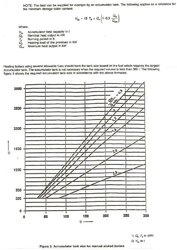Hello All.
So after harassing some of the members here, and paying a visit to a few different vendors, the path to gasification is at least moving forward. My wife and I got the old forced air furnace out of the basement, and managed to get most of the mess cleaned up.
My question at this point is about storage. We went to look at a Tarm Solo 40, which can run with no storage (in fact the sales guy has one at his residence, and has run it without storage for years). This is appealing, given the cost of installing storage. Before this, I went to go look at the Varmebaronen boilers, which I like, but the factory storage is really expensive for what you get (~$5000 for 400 gallons or so). Now they are nice insulated tanks with gauges and air purgers and one of them has the domestic hot water tank in it, but its still a lot of outlay at first.
I have talked with Tom of Maine about some of his unpressurized tanks, as I cant get a big tank into my basement without some major excavation and demolition to remove a wall, and Im just not up for that. So we are limited to a knock down tank, or using something like 120 gallon propane tanks, if I can find some of them locally. So my question is about what would be the better solution, to use something like 3x120 gallon propane tanks for pressurized storage, or to use an unpressurized tank at ~420 gallons? Yes, I know its not much, and I may be able to fit 4 of the propane tanks, or have Tom make me a custom rectangular tank to fit in the space I have.
But assuming the volumes above, what is everyones thoughts on the better install? I like the Varm better from a cleaning standpoint, but the Tarm has a local dealer, and can run with no storage if I need to delay that part of the project.
All thoughts are welcome!
So after harassing some of the members here, and paying a visit to a few different vendors, the path to gasification is at least moving forward. My wife and I got the old forced air furnace out of the basement, and managed to get most of the mess cleaned up.
My question at this point is about storage. We went to look at a Tarm Solo 40, which can run with no storage (in fact the sales guy has one at his residence, and has run it without storage for years). This is appealing, given the cost of installing storage. Before this, I went to go look at the Varmebaronen boilers, which I like, but the factory storage is really expensive for what you get (~$5000 for 400 gallons or so). Now they are nice insulated tanks with gauges and air purgers and one of them has the domestic hot water tank in it, but its still a lot of outlay at first.
I have talked with Tom of Maine about some of his unpressurized tanks, as I cant get a big tank into my basement without some major excavation and demolition to remove a wall, and Im just not up for that. So we are limited to a knock down tank, or using something like 120 gallon propane tanks, if I can find some of them locally. So my question is about what would be the better solution, to use something like 3x120 gallon propane tanks for pressurized storage, or to use an unpressurized tank at ~420 gallons? Yes, I know its not much, and I may be able to fit 4 of the propane tanks, or have Tom make me a custom rectangular tank to fit in the space I have.
But assuming the volumes above, what is everyones thoughts on the better install? I like the Varm better from a cleaning standpoint, but the Tarm has a local dealer, and can run with no storage if I need to delay that part of the project.
All thoughts are welcome!



